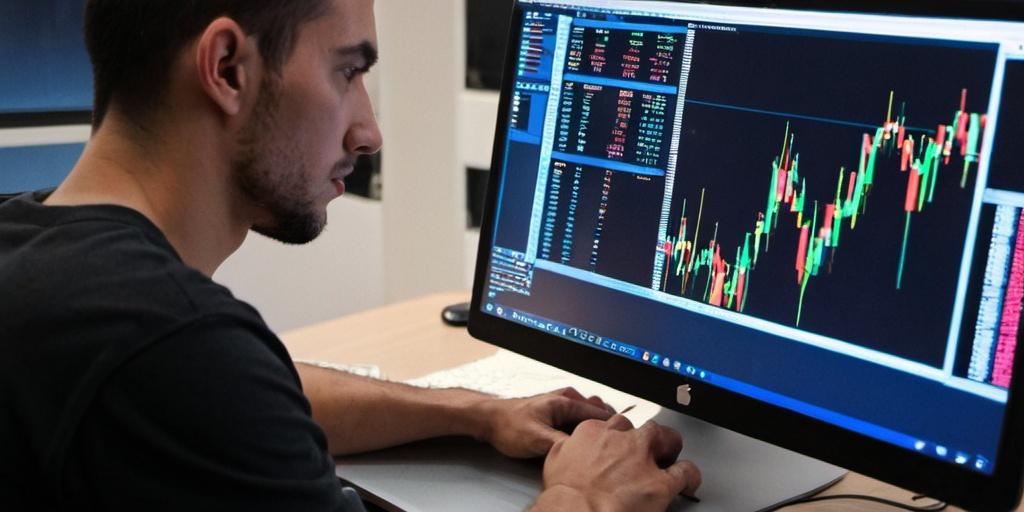Trading software refers to digital platforms and tools that enable individuals and institutions to execute financial transactions, analyze markets, and manage investment portfolios. These platforms serve as the interface between the trader and the markets, providing real-time data, order execution capabilities, charting tools, and automated features. Trading software ranges from basic web-based applications for casual investors to advanced systems used by institutional desks and algorithmic trading operations.
The effectiveness of trading software depends on a range of factors—speed, reliability, functionality, compatibility with external data feeds, and ease of customization. Whether used for discretionary trading or automated systems, the software plays a central role in execution quality, risk management, and decision-making efficiency.

Core Features
Most trading platforms, regardless of market or asset class, offer several core components:
- Order Entry and Execution: The ability to place, modify, and cancel market, limit, stop, and conditional orders.
- Market Data and Charting: Real-time quotes, historical data, and technical charts with customizable indicators.
- Portfolio Tracking: Tools to monitor holdings, P&L, exposure, and transaction history.
- News and Alerts: Integrated news feeds, economic calendars, and price or volume-based alerts.
- Risk Management Tools: Features like margin monitoring, trade limits, and exposure reports.
Some platforms include additional functionality such as options chains, level II data, time and sales windows, or multi-account management. The level of detail and accessibility often depends on the type of account and market access level provided by the broker or software provider.
Types of Trading Software
Trading software can be broadly categorized based on user needs and market complexity.
- Retail Trading Platforms: User-friendly interfaces designed for individual investors. Examples include MetaTrader, Thinkorswim, and TradingView.
- Professional Platforms: Designed for active traders and professionals. These often offer DMA (Direct Market Access), extensive charting, and customizable layouts. Examples include NinjaTrader, CQG, and Interactive Brokers TWS.
- Algorithmic and Quantitative Platforms: Used for developing, testing, and deploying automated trading strategies. These platforms support programming languages like Python, R, or C++, and integrate with market data APIs and execution engines.
- Backtesting and Simulation Software: Enables users to test strategies on historical data before deploying live. Useful for validating assumptions and refining trading logic.
Open-source and customizable solutions are increasingly popular among technically proficient users. Platforms like Open Cluster Group support the development of distributed, scalable software architectures that can be tailored for high-performance trading environments. These frameworks are ideal for institutions or developers looking to build specialized systems that integrate across market data sources, execution engines, and analytics modules.
Considerations When Choosing Software
The right trading software depends on the user’s trading style, asset class, budget, and technical requirements. Key considerations include:
- Latency and Execution Speed: For scalpers or high-frequency traders, milliseconds matter. Platforms must be optimized for low-latency order routing and execution.
- Stability and Uptime: Consistent access during market hours is non-negotiable. Software should operate reliably under normal and high-volume conditions.
- Customization: Advanced users may require programmable scripts, strategy automation, or API access for data and trade routing.
- Security and Compliance: Secure login protocols, data encryption, and regulatory compliance are essential, especially for multi-user or institutional setups.
- Broker Compatibility: Some platforms are broker-neutral, allowing integration with multiple brokers or exchanges. Others are proprietary and only function within the provider’s ecosystem.
Costs vary widely. Some platforms are offered for free by brokers with limited features, while others require paid subscriptions, license fees, or per-transaction charges. It’s important to balance functionality with cost based on actual usage and trading volume.
Automation and Algorithmic Integration
Automated trading continues to grow in popularity, driven by increased data availability and accessible development tools. Trading software with built-in strategy builders, support for external scripting languages, or backtesting environments can help traders implement rule-based systems.
These systems can be fully automated or semi-automated, depending on the user’s preference. Automated tools can place trades, manage stops, and rebalance portfolios based on predefined rules. However, they also require careful monitoring, as technical failures or incorrect logic can result in unintended trades.
For quantitative or institutional users, distributed system design and data pipeline management are increasingly relevant. Frameworks developed through communities like Open Cluster Group offer scalable solutions for high-volume, data-driven trading applications across clustered environments.
Mobile and Cloud-Based Access
Modern trading software includes mobile and cloud-based platforms that allow for trading on the go. These versions typically offer simplified interfaces but retain core functions like order entry, position monitoring, and chart access.
Cloud platforms also enable greater flexibility in data storage, access permissions, and integration with third-party tools. Automated backups, software updates, and remote access improve usability for multi-device traders and teams managing multiple accounts.
